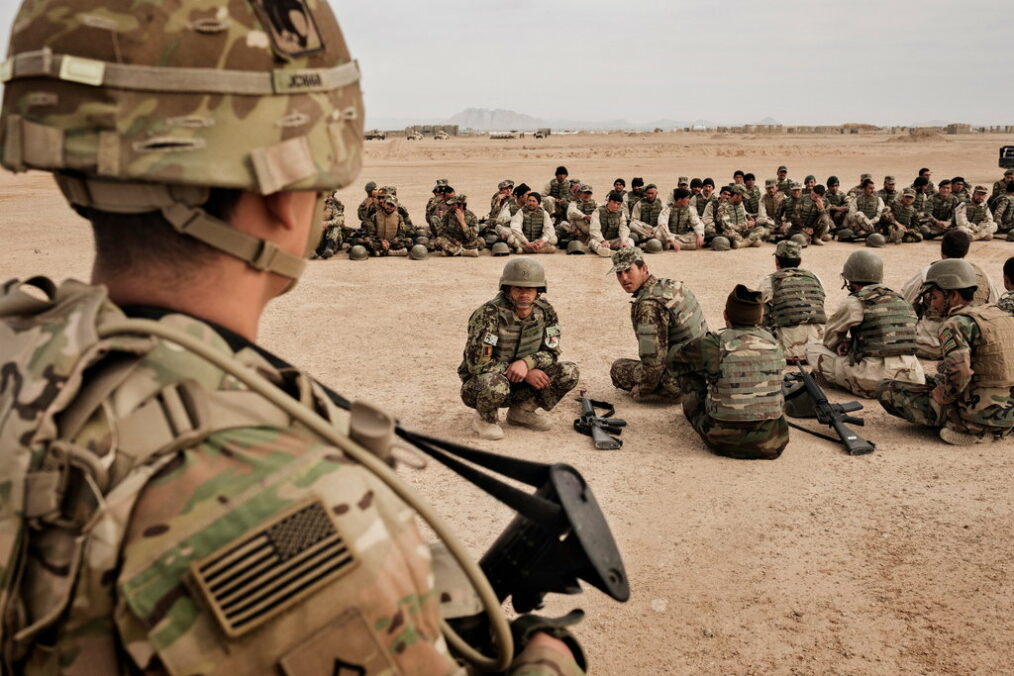Does the Groundbreaking Agreement for Bringing Peace to Afghanistan Go Beyond the Negotiation Table?
After eighteen months of talks and nearly twenty years of war, Afghanistan looks like it has made a step in the right direction: at the end of February, the United States and the Taliban signed a historic peace agreement in Doha, Qatar. The Agreement is undoubtedly a breakthrough, and even critics of US President Donald Trump credit the administration for achieving a deal that both the Bush and the Obama administrations failed to do. Nevertheless, the three part Agreement for Bringing Peace to Afghanistan is a crucial step towards peace, but only the beginning of it.
The Agreement signed on February 29 features a commitment to end American presence in Afghanistan and guarantees that the Taliban will prevent international terrorist organizations from growing on Afghan territory. The deal also features a promise that the Taliban will engage in talks with the US-backed government for achieving a ceasefire, and a pledge to find solutions for managing the release of 5000 Taliban prisoners and 1000 prisoners from the other side.
The prospects for Afghanistan are intricate, and the fragile balance faces manifold pressures. The US-backed incumbent was declared the winner of the presidential elections five months after and led rival Abdullah Abdullah to contest results. This left Afghanistan with two de facto presidents, each assigning governors. Furthermore, Afghanistan has confirmed 4 COVID-19 cases. Given its proximity to Iran (which has confirmed over 7000 cases) and potential low detection rates, Afghanistan is adding another precipitating factor to its lengthy crisis.
The Agreement empowered the Taliban, bearing the cost of legitimizing the group by bringing it to the negotiations table. Throughout the Peace Process the Taliban have been seeking to gain back the power they lost, and the deal seems to be giving them the upper hand. Since the agreement was signed, the Taliban resumed operations against Afghan forces and beyond: last week a bomb exploded in the eastern Khost province, leaving three dead and eleven wounded, and at least twenty-nine people were killed in a mass shooting at an event attended by the country’s opposition leader in Kabul.
The US troops withdrawal from Afghanistan brings about “a long, windy, bumpy road to peace”, said Defense Secretary Mark Esper after approving the withdrawal. The Agreement promises to reduce the number of US forces in Afghanistan to 8,600 from 12,000 within the first 135 days, and a complete withdrawal in 14 months. As the Reduction of Violence Plan fell into the background, President Trump acknowledged “Taliban could ‘possibly’ seize power after US troops leave”, and sources indicate the Taliban are preparing their annual spring offensive.
Trusting the Taliban with safeguarding the interests of the US and its allies against terrorist organizations such as al-Qaeda might have been foolish. Commentators point out the Taliban cannot be trusted with putting an end to terrorist sanctuaries in Afghanistan, recalling the Mujahideen civil war and the mistakes made by the US in Iraq, which opened the space for the emergence of the Islamic State. Are the Taliban trustworthy? Or will Islamic State seize the opportunity and grow stronger in Afghanistan? Previous lessons show that when radicals fight against radicals everyone loses.
The intra-Afghan peace negotiations supposed to begin in the aftermath of the Agreement are equally problematic. President Ashraf Ghani refused to accept the release of thousands of Taliban prisoners as a precondition for talks, while US Secretary of State Mike Pompeo dismissed the rejection of the clause by the Afghan government. Furthermore, the list of negotiators is not ready and the Afghan political community does not show signs of compromise. Directions for a prospective power-sharing government are yet to materialize, and the Afghan government remains vague and weakened by the US promise to ‘refrain from intervening in the domestic affairs of Afghanistan’.
What Should Be Done?
US presence must be maintained until more progress is achieved in the domestic peace process. The US might have signed a peace agreement, but Afghan parties are still at war and the government is losing ground. The Peace Agreement allegedly contains two classified annexes that include a timeline for the next 18 months, details on prohibited attacks on both sides, and most important, how the US will share information about its troop locations with the Taliban. Many Afghans fear that the Agreement aids the Taliban, as the modalities of permanent ceasefire are not settled by the deal.
The US and its international partners must commit to funding and training the Afghan Army, and develop a Disarmament, Demobilization and Reintegration (DDR) program for the over 60,000 Taliban fighters. The US withdrawal will leave behind a power-vacuum, much like the Soviets did in 1989. The 1988 Geneva Accords provided a framework for Soviet departure from Afghanistan, which commenced in less than a year. The Soviets also called it a ‘gradual withdrawal’ and facilitated a Policy of National Reconciliation. Yet, in the absence of a comprehensive DDR plan, the situation in Afghanistan rapidly deteriorated leading to a fully-fledged civil war. History should not be repeated.
The US troops should not withdraw until third parties such as Pakistan are committed to and included into the peace process, and international terrorist organizations active in Afghanistan are weakened, if not eradicated. Numerous international terrorist groups use Afghanistan as their bases, recruitment centers, support and organizing their fighters, and a power vacuum would give them a boost that will transcend the borders of Afghanistan.
Elisabeta is a Counter-Terrorism Research Fellow at Rise to Peace. She is also a Ph.D. candidate in Public Policy at Central European University in Budapest and Vienna.





